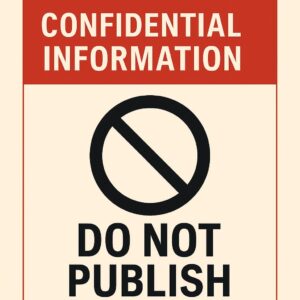
SOC 2 vs SOC 3: Differences
TL;DR
SOC 2 reports are detailed, confidential compliance documents shared only with enterprise clients and auditors under NDAs, while SOC 3 reports are public-facing summaries that can be safely published on websites to demonstrate security standards to general audiences. Most companies benefit from having both: SOC 2 for technical stakeholders who need detailed security information, and SOC 3 for marketing and building public trust.
If you're running a SaaS company or handling customer data, you've likely come across the terms SOC 2 and SOC 3. Both reports are rooted in the same set of rigorous standards designed to ensure your organization protects sensitive information. But what exactly sets them apart? Do you need both, and which one can you safely share with customers or even display on your website?
What Is a SOC 2 Report?
A SOC 2 (System and Organization Controls 2) report is a comprehensive document that outlines how your company manages customer data according to the trust principles defined by the American Institute of Certified Public Accountants (AICPA). These principles include:
- Security – Protection against unauthorized access (required for every report)
- Availability – Ensuring your systems remain reliable and accessible
- Processing Integrity – Making sure data is processed accurately
- Confidentiality – Keeping sensitive business information protected
- Privacy – Handling personal data appropriately
A SOC 2 report is designed for a specific audience, usually enterprise clients, partners, or auditors who need to evaluate your security and compliance posture. It includes:
- Technical descriptions of your internal systems
- The controls you've implemented
- The outcome of a formal audit conducted by an independent CPA firm
Two types of SOC 2 reports:
- Type I: Evaluates the design of your controls at a specific point in time
- Type II: Examines how effective those controls are over a period of several months (typically 6–12)
Check our blog for more details about the differences between Type 1 and Type 2
Because of the level of detail involved, SOC 2 reports are confidential and should only be shared under an NDA or similar agreement. Publishing them publicly is strongly discouraged, as they may contain sensitive infrastructure or even failed audit results.
What About SOC 3?
SOC 3 is essentially the public-facing sibling of SOC 2. It uses the same trust principles, but it omits all technical specifics and audit results. Think of SOC 3 as a summarized, marketing-friendly version of SOC 2.
It's designed for broader audiences: prospective customers, investors, or anyone visiting your website. Unlike the dense and technical SOC 2, the SOC 3 is short, readable, and safe to publish anywhere, from your security page to a sales pitch.
While it doesn't go into depth, the SOC 3 still shows that your company adheres to rigorous security standards, which can be a powerful trust signal for non-technical stakeholders.
SOC 2 vs SOC 3: Understanding the Difference
The key distinction comes down to detail and audience. SOC 2 is a comprehensive, confidential report. SOC 3 is a high-level, public summary.
| Feature | SOC 2 | SOC 3 | |---|---|---| | Purpose | Internal assurance | Public trust | | Content | Systems, controls, audit results | Summary of controls | | Audience | Clients, auditors, procurement | General public, customers | | Format | Detailed, technical PDF | Short, accessible overview | | Use Case | Compliance & due diligence | Marketing & brand trust |
Ready to Streamline Your Compliance?
Discover how Humadroid can simplify your compliance management process.
Can You Publish a SOC 2 Report?
In a word: no.
SOC 2 reports are not meant for public disclosure. Their contents are often too detailed and sensitive for general audiences. Infrastructure details, descriptions of vulnerabilities, or even audit findings could pose a security risk if exposed.
That said, you can and should let clients know you've completed a SOC 2 Type II audit. Just be sure to offer the full report only under the appropriate confidentiality terms.
If you want to demonstrate your compliance publicly, a SOC 3 report or a simplified security overview is the way to go.
When Should You Use a SOC 3 Report?
If your goal is to communicate trust and compliance without bogging down your audience in technical language, SOC 3 is your best bet.
It's perfect for:
- Adding credibility to your Trust or Security webpage
- Supporting sales conversations with smaller businesses
- Showcasing compliance in investor materials or due diligence portals
Many companies that complete a SOC 2 Type II audit will work with their auditor to produce a SOC 3 report based on the same review. It's a simple, effective way to highlight your commitment to security without compromising sensitive information.
Do You Need Both SOC 2 and SOC 3?
That depends on your business model and the type of clients you serve.
If you're targeting enterprise customers or working with procurement teams, SOC 2 is likely essential. These stakeholders often require deep insight into your security controls.
On the other hand, if you also want to build trust with general users, smaller clients, or the public, a SOC 3 report can complement your efforts.
💡 Many companies choose to have both:
SOC 2 for those who ask, and SOC 3 for everyone else.
Different Tools for Different Audiences
SOC 2 and SOC 3 serve different purposes but work well together.
Think of SOC 2 as your in-depth, behind-the-scenes proof that your systems are secure and compliant. SOC 3 is your friendly, public-facing badge of trust.
Start with SOC 2 Type II it's the foundation. Once that's in place, creating a SOC 3 summary is straightforward and highly recommended.
At the end of the day, it's not about choosing one over the other, but using each in the right context to build confidence in your business.




